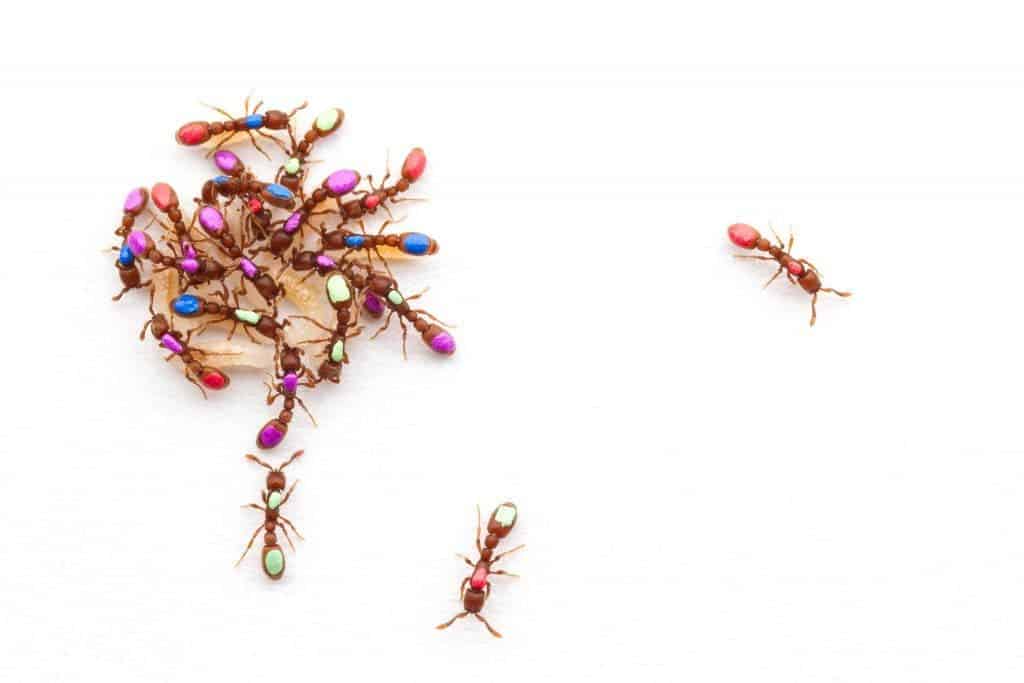Ants have developed incredibly complex societies, with divided workloads and responsibilities. Now, scientists have zoomed into why this happens and how ants started to split work up.

In Ancient Greece, the philosopher Plato contemplated on what he believed to be an essential and inherent trait of mankind: division of labor. Countless philosophers and later on, economists, weighed in on this division of labor — with different opinions coming from different schools of thought. But no matter what the conclusions were, division of labor was universally a human matter.
However, that’s not really the case. Several groups of animals employ this practice; most notably, ants and bees.
It’s no coincidence that these creatures divide labor — they live in colonies, and dividing up tasks is a major benefit of group living. But how did this tactic evolve in the first place, before they grouped up in colonies?
In order to learn more about this, Daniel Kronauer and colleagues studied 100 colonies of Ooceraea biroi, the clonal raider ant, which lives in small groups. As far as ants go, clonal raider ants are rather unusual. They don’t have a queen and instead reproduce through a process fancily called ‘thelytokous parthenogenesis‘ — which essentially means that females are produced through unfertilized eggs.
These ants raid nests of other ant species to feed on the brood, but not all adults do so — some are tasked with other jobs, such as caring for the offspring. Largely speaking though, all workers are identical. The researchers tagged the ants with spots of paint and then tracked their movements (the paint was shown to not have any significant effect on the overall behavior of the ants).
They subsequently split the ants into smaller and smaller groups, observing whether division of labor still takes place. They found that even in groups as small as six, the ants still divided labor — which is an essential aspect of how the practice can begin in the first place.
“The initial fitness benefits of group living are considered to be the greatest hurdle to the evolution of sociality, and evolutionary theory predicts that these benefits need to arise at very small group sizes,” the researchers write in the study.
Then, as the colonies grow in numbers, individual workers grow more specialized in their activities and colonies become more behaviourally diverse. This comes with significant benefits: the colony fitness per individual increases. Ants who divide work have better survival rates, reproduction levels, and developmental timings. Discussing with ZME Science, Kronauer explained that the bigger the ant groups get, the more they have to benefit from this division of labor.
“One important point of the study actually is that you can get steep increases in group homeostasis (and therefore probably fitness) simply as a function of increasing group size, without any behavioral specialization between individuals (and this is part of our definition of division of labor). In other words, you don’t necessarily need division of labor (as defined in our study) for larger groups to be better than smaller groups. However, we show in our model that within a given group size, groups with more division of labor do better than groups with less division of labor. In other words, division of labor acts as an additional benefit as groups get larger.”
By showing that this tactic can emerge even in groups with a few individuals, the team showed that division of labor can emerge pretty much immediately when groups form. However, this practice may not always be beneficial — which explains why not all colonial creatures practice it, Kronauer concludes:
“I would say that whether division of labor is beneficial for a given social group depends on the ecological context. In a group of ants there are different tasks, such as foraging, brood care, nest defense, waste disposal, etc. that need to be performed, and so the group can benefit from division of labor. In other systems, that’s less clear. In a zeal of zebras or a shoal of fish, for example, the benefits probably arise mostly from group protection against predators, rather than division of labor. Whether individuals in these groups would additionally benefit from division of labor is hard to say, but given that there doesn’t seem to be any obvious division of labor at least one might surmise that they wouldn’t.”
Journal Reference: Ulrich et al. “Fitness benefits and emergent division of labour at the onset of group living”. Nature, https://doi.org/10.1038/s41586-018-0422-6


